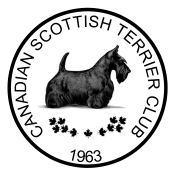FROSTBITE
Usually affects the toes or pads, ears, tail and scrotum.
Symptoms: The skin is pale white at first, but with the return of circulation it becomes red and swollen. It may peel. Eventually it will look much like a burn, with an obvious line between the live and dead tissue. The dead tissue will separate in one to three weeks.
Treatment: Warm frostbitten parts gradually with warm water compresses or by applying body heat or warm water packs to the areas. Do NOT use water that is warmer than the temperature of a baby bottle (warm to the wrist only), or apply snow or ice to the frostbitten areas as this will worsen the damage to the affected tissue. DO contact your veterinarian immediately as in severe cases gangrene can occur. Antibiotics may be needed to prevent infection.
HYPOTHERMIA
Most likely occurs when a dog is wet and exposed to cold temperature for a prolonged period. It is seen most often in short coated and Toy breeds.
Symptoms: Violent shivering followed by listlessness and apathy; a rectal temperature below 97 degrees; finally collapse and coma then death.
Treatment: Immediately wrap the animal in blankets (or a coat) and take it into a warm area. If it is wet because it has fallen into ice water, rub vigorously with dry towels to warm the skin. A warm bath may also help in this instance. Warm chilled dogs by applying warm water packs (the temperature should be no warmer than for a baby bottle; check it first to insure that it is only warm by applying to your wrist) to the chest, abdomen and armpits. Monitor by checking the rectal temperature until it reaches 100 degrees F. Warming with a hair dryer is also helpful.
CHRISTMAS TREE SAFETY
We all love the beauty of a well decorated tree, but unfortunately it also poses a danger to your pet. Chewing on electrical cords has killed or injured more than one pet, so please use a GFI equipped receptacle to reduce this risk, or leave the tree unplugged if you are not in the room to supervise. Try to place breakable glass ornaments towards the top of the tree where your pet cannot reach them and chew on them. Some people like to attach the tree to the wall or ceiling so it cannot fall over accidentally if a child or pet does try to take something off the tree. Popcorn strands and other edible ornaments are very pretty, but they don’t have a place in a pet owning household – they are just too darn tempting! Tinsel poses a very serious problem, as cats especially, like to nibble on and play with the strands. Once ingested, tinsel does not dissolve in the intestinal tract and can cause blockages and other serious problems that usually require surgery to save the pet’s life. In our household, we have replaced the metal ornament hooks with string, ribbon or colorful yarn. I don’t have to worry about my pets eating these hooks, and the string or yarn ties keep the ornaments more securely attached to the tree.
CHOCOLATE
Chocolate toxicosis is not uncommon in small animals, including the dog, and amounts as small as 1 oz per kilogram of body weight can kill a small dog. Theobromine and caffeine are present in chocolate in varying amounts depending upon the type of chocolate. Unsweetened or baking chocolate is much more dangerous than an equal amount of milk chocolate. Treatment of chocolate toxicosis should begin immediately even if symptoms are absent – call your veterinarian!
Symptoms of chocolate poisoning: Trembling, vomiting, diarrhea, hyperactivity, rapid breathing, rapid or irregular heartbeat, seizures and coma, which can lead to death.
Treatment: Once the symptoms occur, treatment is mainly supportive: consisting of intravenous fluids to replace fluids lost through diarrhea and vomiting, and the administration of drugs to control irregular heartbeat and hyperactivity. Prevention of these symptoms is always preferable to supportive therapy.
COUGH! COUGH!
Dogs do not catch “colds” like people do. If your dog should begin to exhibit the signs of a “cold” such as a fever, loss of appetite, listlessness, and a watery discharge from the eyes and nose, then it should be examined by a veterinarian. These symptoms can indicate distemper in its early stages. A hacking cough, accompanied by a watery mucous type vomit may indicate Bordetella or “kennel cough”. If left untreated this viral disease can lead to pneumonia. There are vaccines on the market to protect against kennel cough but they do not offer complete protection. However, they may lessen the severity of an attack.
GROOMING & EXERCISE
Keep your Bouviers coat well groomed! It is important to keep the mats out of your dog’s coat as matted coats do not have the same insulating qualities as a nice properly looked after coat. Leave the hair longer on the ears and head. The feet will need special attention as snow often balls up between the pads. Besides being uncomfortable for your dog to walk on, these ‘snowballs’ can cause the coat to mat up in this area holding dampness next to the skin, resulting in raw oozing sores. If you walk on roads or sidewalks where de-icers or salt have been used, do not allow your dog to lick his feet – these materials can be caustic and will irritate his tongue and mouth, not to mention his pads. Wipe the feet off immediately when you return from your walk, or buy a set of leather or nylon ‘Booties’ and use them. You can also try applying Vaseline to the area before going out on a walk.
Your pet will still appreciate his regular walks even during our snowy winter weather. Of course if the weather is very cold or there is a high wind chill, you can always shorten the duration of the walk. This is especially true for young or very old dogs, or for those with serious health problems. Read your dog’s body language, if he starts to hop along on two or three legs, he wants to go home too! If it is icy and slippery outside, walks on leash are safer than wild off-leash romp sessions; dogs can break toes and bones, or damage muscles and tendons if they slip while running or turning.
EDITOR’S NOTE: Health and Medical articles in this newsletter are NOT meant to diagnose or treat your pet. Always consult your own veterinarian for advice appropriate for your pet.
Views: 1021





